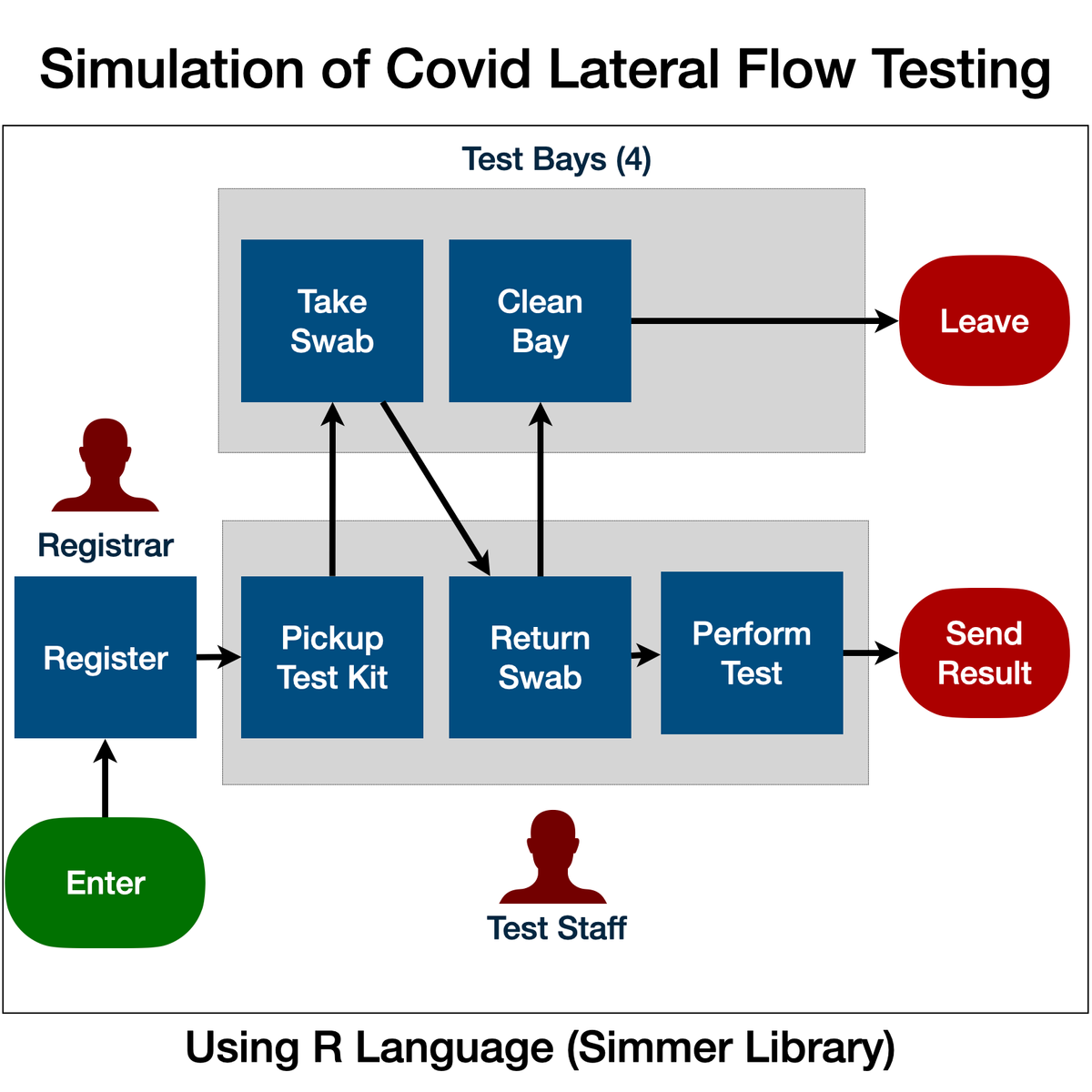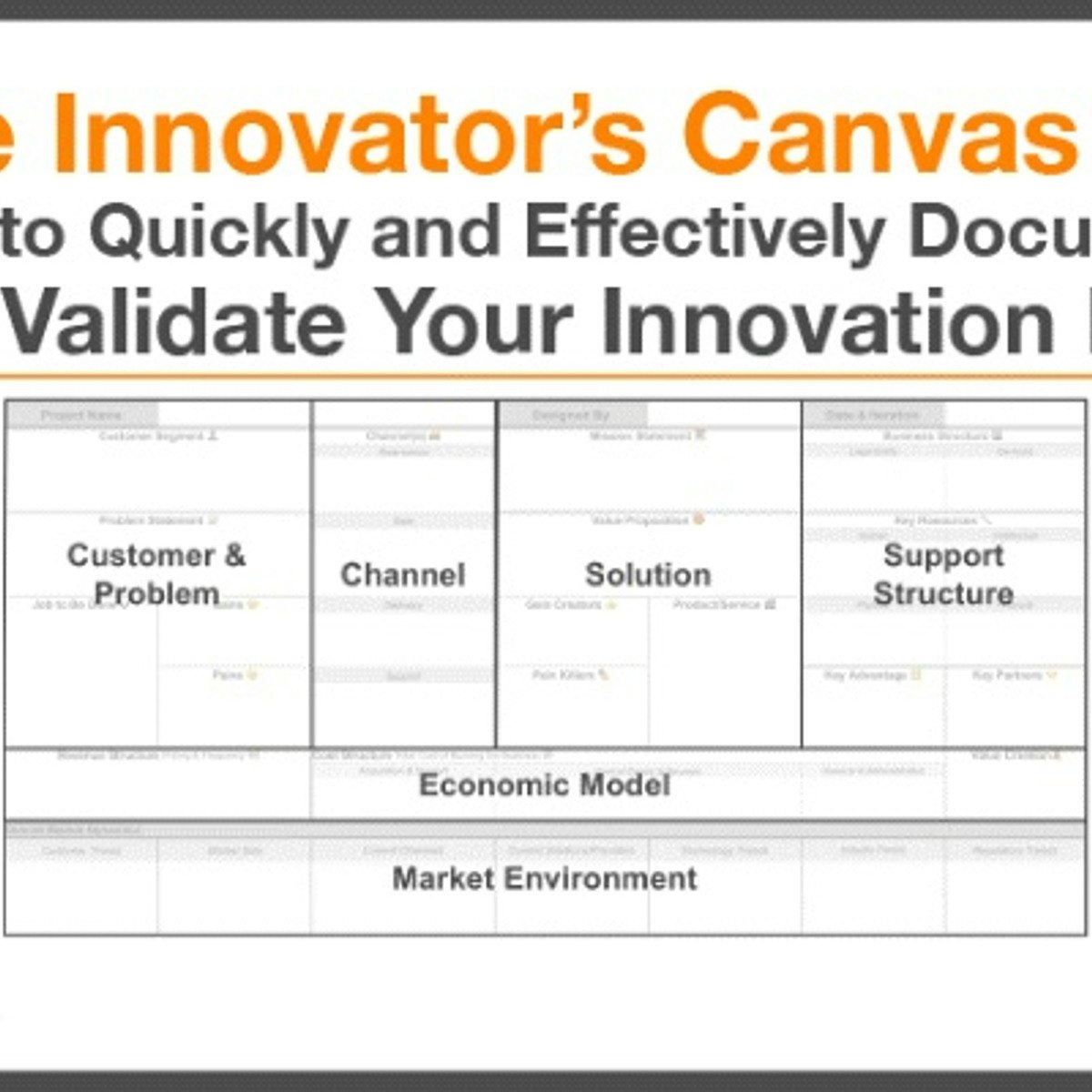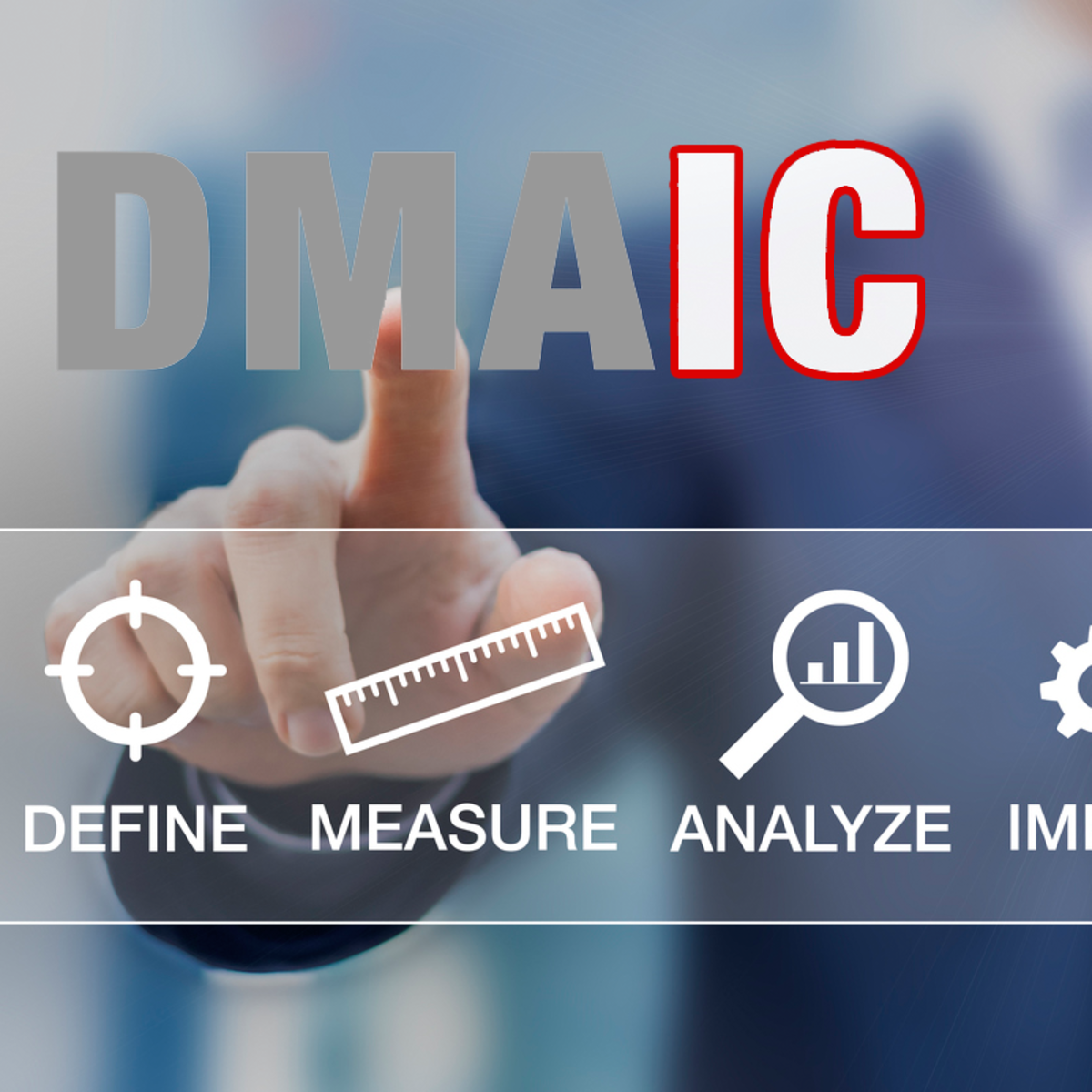Back to Courses









Leadership And Management Courses - Page 48
Showing results 471-480 of 600

Simulation of Covid-19 Testing Process Using R Simmer
Welcome to "Simulation of Covid-19 Testing Process Using R Simmer". This is a project-based course which should take under 2 hours to finish. Before diving into the project, please take a look at the course objectives and structure.
By the end of this project, learn gain introductiory knowledge of Discrete Event Simulation, use R Studio and Simmer library, create statistical variables required for simulation, define process trajectory, define and assign resources, define arrivals (eg. incoming customers / work units), run simulation in R, store results in data frames, plot charts and interpret the results.

Strategic Analysis with Financial Competitive Profile Matrix
By the end of this guided project, you will be able to use the Financial Competitive Profile Matrix (FCPM) to analyze your industry and identify your competitive advantage with key financial indicators. FCPM is a strategic management tool that enables you to benchmark your company in relation to competition and then identify the relative strengths and weaknesses of all the competitors based on some Financial Critical Success Factors (FCSFs) analysis. The FCSFs are assigned weight based on their importance, ranked on their strengths and weaknesses, then the weight is multiplied by the rank to determine weighted score. The sum of the weighted score reveals the company that has competitive advantage or disadvantage in the industry.
To demonstrate the application of the FCPM, we will use spreadsheet to analyze a division of our energy services company together. Example on the case study would empower you to use the model to analyze your company or any other company of your choice. The project is for business leaders who want have a deep insight on their competitive environment. Also, for strategist and financial analysts who are interested in helping organization in making informed strategic decisions. At the end of the project, you will be able to use the FCPM to analyze your company, identify the strengths and weaknesses of the competitors, and then use it to determine your strategic direction

Create Employee Management System with When I Work
By the end of this course, you will create an effective employee management system using When I Work. This course builds on the foundation from the Introduction to Scheduling with When I Work Course and is intended to further develop the program’s team management capabilities. In this project, you will manage and track employee attendance and timesheets. In addition, you will create a talent acquisition plan using the free features on When I Work to make job postings, track applicants, and hire new employees.
Effective employee management processes and new talent acquisition programs are important elements in every successful company. In this project, you will get hands-on experience using the When I Work program to establish a more detailed and effective employee management system.
Note: This course works best for learners who are based in the North America region. We’re currently working on providing the same experience in other regions.

Digital Competition in Financial Services
Welcome to Digital Transformation Strategy! As you probably know, this is the first course in a three part specialization focused on the digital transformation of finance. We'll aim to bring you insights about how digitalization intersects with finance, culled from one of the world's top regions for digital innovation. I'm excited to have you in the class and look forward to helping you learn more about this important topic.
To begin, I recommend taking a few minutes to explore the course site. A good place to start is the navigation bar on the left. Click Course Content to see what material we’ll cover each week, as well preview the assignments you’ll need to complete to pass the course. Click Discussions to see forums where you can discuss the course material with fellow students taking the class. Be sure to introduce yourself to everyone in the Meet and Greet forum!
This course should take about four weeks to complete. You can check out the recommended course schedule below to see a quick overview of the lessons and assignments you’ll complete each week.
By the time you finish this course, you’ll have mastered the transformational forces of digitalization and the new competitive dynamics it gives rise to, learned from leading financial companies and seen inspirational examples from the digital masters. You'll be introduced to the Capstone Project for the specialization and have a chance to form some preliminary solutions for a financial company seeking a new strategy for the digital age of finance.
Good luck as you get started. I look forward to seeing you in class!
Designing the Organization
Organizations are complex and can be difficult to manage well, so managers need tools to help them better understand and deal with the many complexities and challenges associated with organizational life. In this course, you will learn theories, principles, and frameworks that will help you design more effective organizations.
You will be able to:
- Analyze organizations from multiple perspectives to better understand business challenges
- Strategically plan for effective organizational governance
- Develop systems to plan for growth and change
- Understand implications of the external environment on business and strategically respond to these factors
This course is part of Gies College of Business’ suite of online programs, including the iMBA and iMSM. Learn more about admission into these programs and explore how your Coursera work can be leveraged if accepted into a degree program at https://degrees.giesbusiness.illinois.edu/idegrees/.

Validating Your Business Model with Innovator’s Canvas
By the end of this guided project, you will be able to use the Innovator’s Canvas to test your startup business model hypothesis. The Innovator’s Canvas is a business model validation tool that help entrepreneurs to test their business idea assumptions. The Canvas is divided into six major components: customer/problem, solution, channel, support structure, economic model, and market environment. The goal of the Canvas is not just to provide an analytical tool, but to provide a systematic process by which business models can be documented, tested and iteratively created until you have achieved either fast/cheap failure or success
For us to practically demonstrate how the model works, we will use a spreadsheet to analyze a startup Social Venture. Examples from the case study would empower you to use the model to analyze your startup idea or any other company of your choice. The Innovator’s Canvas is entrepreneur-focused, but equally useful for everyone involved in introducing a new product or idea to the market. At the end of the project, you will be able to use the Canvas to brainstorm possible business models, prioritize where to start, and track ongoing learning

Six Sigma Advanced Improve and Control Phases
This course is for you if you are looking to dive deeper into Six Sigma or strengthen and expand your knowledge of the basic components of green belt level of Six Sigma and Lean. Six Sigma skills are widely sought by employers both nationally and internationally. These skills have been proven to help improve business processes and performance. This course will take you deeper into the principles and tools associated with the "Improve" and "Control" phases of the DMAIC structure of Six Sigma.
It is highly recommended that you complete the "Yellow Belt Specialization" and the courses "Six Sigma and the Organization (Advanced)," "Six Sigma Advanced Define and Measure Phase," and "Six Sigma Advanced Analyze Phase" before beginning this course.
In this course, your instructors will introduce you to, and have you apply, some of the tools and metrics that are critical components of Six Sigma. This course will provide you with the advanced knowledge of root cause analysis, lean tools, control plan, process control, and statistical process control (SPC) as they are associated with Six Sigma and Lean.
Every module will include readings, videos, and quizzes to help make sure you understand the material and concepts that are studied.
Registration includes online access to course content, projects, and resources but does not include the companion text The Certified Six Sigma Green Belt Handbook (2nd edition). The companion text is NOT required to complete the assignments. However, the text is a recognized handbook used by professionals in the field. Also, it is a highly-recommended text for those wishing to move forward in Six Sigma and eventually gain certification from professional agencies such as American Society for Quality (ASQ).

Essentials of Management and Strategic Planning
Essentials of Management and Strategic Planning introduces learners to the basics of running a business and strategies for improving an organization’s growth and profitability. Learners will gain a better understanding of management and leadership, along with how the two are different, and how strong leadership plays a role in developing people. Learners will also explore what strategy is and how key strategies can push an organization ahead of its competitors. Other topics to be covered include creating action plans and accountability.

Assessment, Interviewing and Onboarding
Developing a robust, responsive recruitment process is one of several integrated organizational activities that must be embedded to achieve greater diversity and inclusion.
In this course, you will learn about the pivotal role recruitment plays in building and sustaining a diverse workforce and inclusive workplace. By examining some of the dominant traditional approaches to recruitment, you will understand how, in the contemporary global, social, and technological environment, many are no longer "fit for purpose," limited in their capacity to seek out diversity or recognize the employee attributes that support inclusion. For example, this course will examine how unconscious bias can compromise efforts unless expressly addressed in the recruitment process.
This course is one of four that comprise the Recruiting for Diversity and Inclusion Specialization, offered by the University of Western Australia.
Complete them all to gain an in-depth understanding of this fascinating and important topic.

Managing Social and Human Capital
People are the most valuable asset of any business, but they are also the most unpredictable, and the most difficult asset to manage. And although managing people well is critical to the health of any organization, most managers don't get the training they need to make good management decisions. Now, award-winning authors and renowned management Professors Mike Useem and Peter Cappelli of the Wharton School have designed this course to introduce you to the key elements of managing people. Based on their popular course at Wharton, this course will teach you how to motivate individual performance and design reward systems, how to design jobs and organize work for high performance, how to make good and timely management decisions, and how to design and change your organization’s architecture. By the end of this course, you'll have developed the skills you need to start motivating, organizing, and rewarding people in your organization so that you can thrive as a business and as a social organization.
Popular Internships and Jobs by Categories
Browse
© 2024 BoostGrad | All rights reserved


